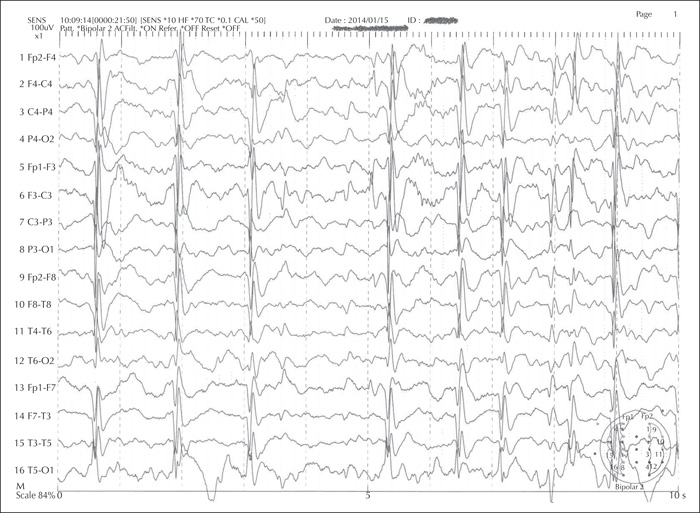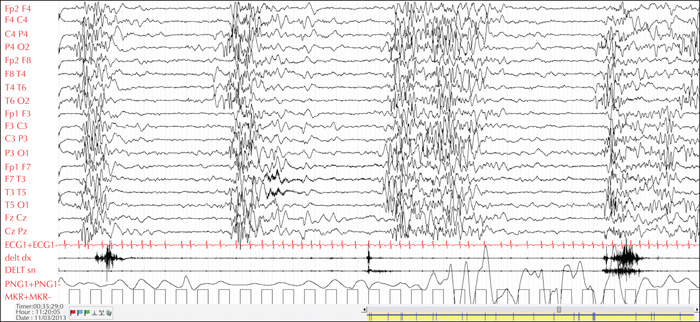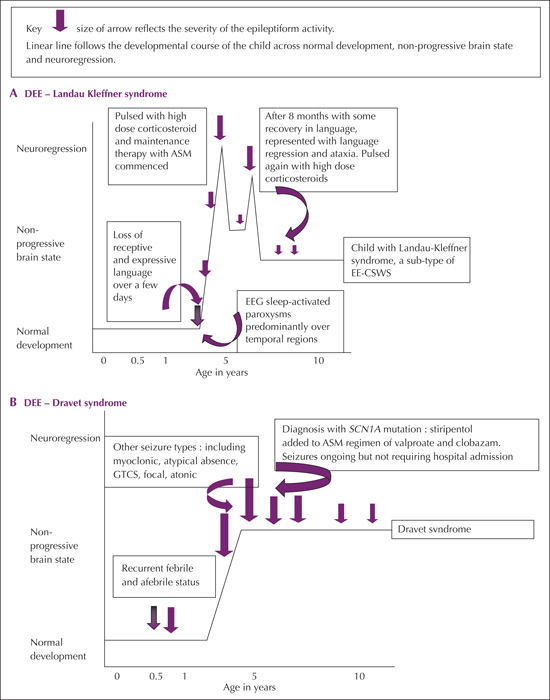Epileptic Disorders
MENUDevelopmental and epileptic encephalopathies: recognition and approaches to care Volume 23, issue 1, February 2021


Figure 1
EEG of a four-year-old girl with EE-CSWS which demonstrates almost continuous, slow spike-and-wave discharges in sleep. This child has an epileptic encephalopathy.

Figure 2
Sleep EEG recording of a two-month-old infant with STXBP1 mutation, tonic seizures and developmental delay, demonstrating burst-suppression and generalized polyspike waves. This child has a developmental and epileptic encephalopathy. .

Figure 3
(A) Illustrative case demonstrating the dynamic evolution of cognition and the impact from epileptic activity seizures in a previously developmentally normal child who developed receptive and expressive language aphasia at three years of age with semiology supported by EEG compatible with Landau Kleffner syndrome. Cognitive and EEG abnormalities improved with the first course of pulsed high-dose corticosteroids, but she relapsed eight months later, correlating with deterioration in her EEG, requiring a further corticosteroid pulsed course. (B) Illustrative case demonstrating the dynamic evolution of cognition in a patient with Dravet syndrome and how the epileptic seizures affect the developmental outcome. (C) Scenario 1: Illustrative case demonstrating the dynamic evolution of cognition and the impact from epileptic activity seizures in a child with a hypoxic birth insult who developed epileptic spasms at six months of age (West syndrome). Epileptic spasms resolved following a course of high-dose corticosteroids, developmental delay persisted, and at two years of age, the child developed further seizure types consistent with LGS and associated with further loss in cognitive function. This is compatible with DEE. Scenario 2: Illustrative case demonstrating the dynamic evolution of cognition and the impact from epileptic activity seizures on an infant with normal initial development. The infant developed epileptic spasms at four months of age with associated neuroregression and hypsarrhythmia on EEG (West syndrome). Epileptic spasms resolved following a course of high-dose corticosteroids. Development and EEG returned to normal. Genetic, metabolic and structural assessments were unremarkable. This is compatible with EE. (D) Illustrative case demonstrating the dynamic evolution of cognition and how epileptic seizures affect this in a patient with trisomy 21. (E) Illustrative case demonstrating the dynamic evolution of cognition and how epileptic seizures affect this in a patient with myoclonic atonic epilepsy.

